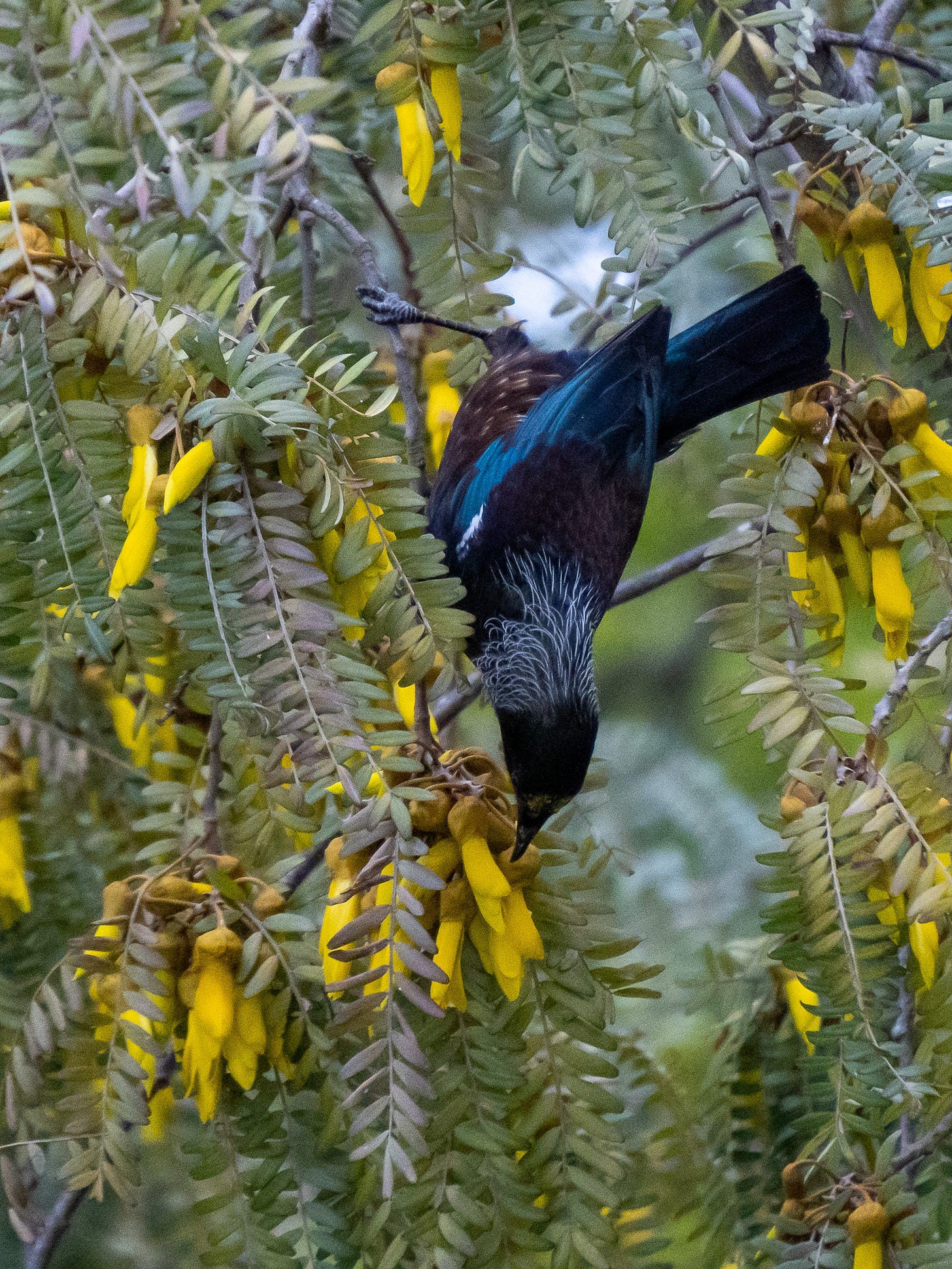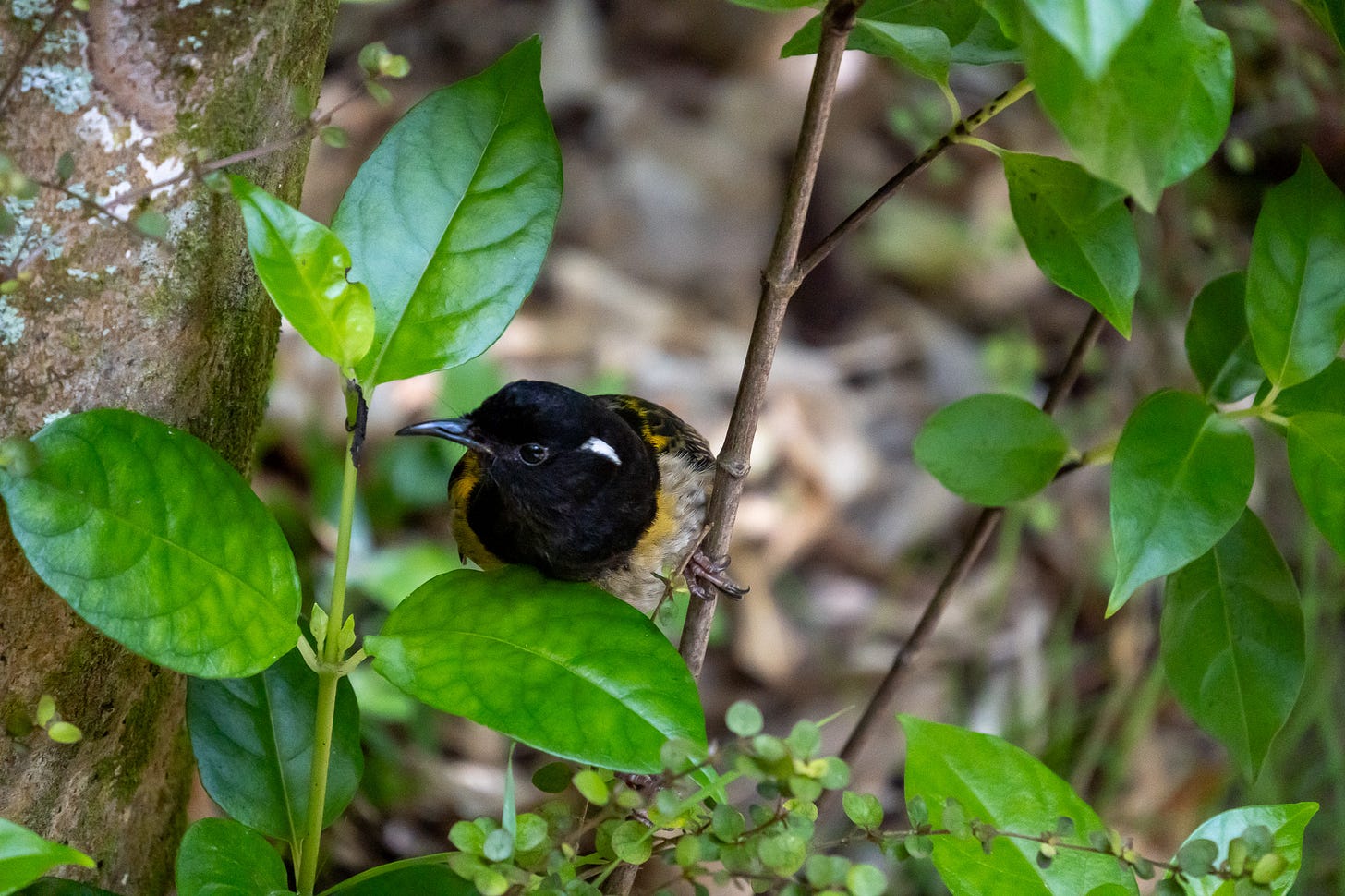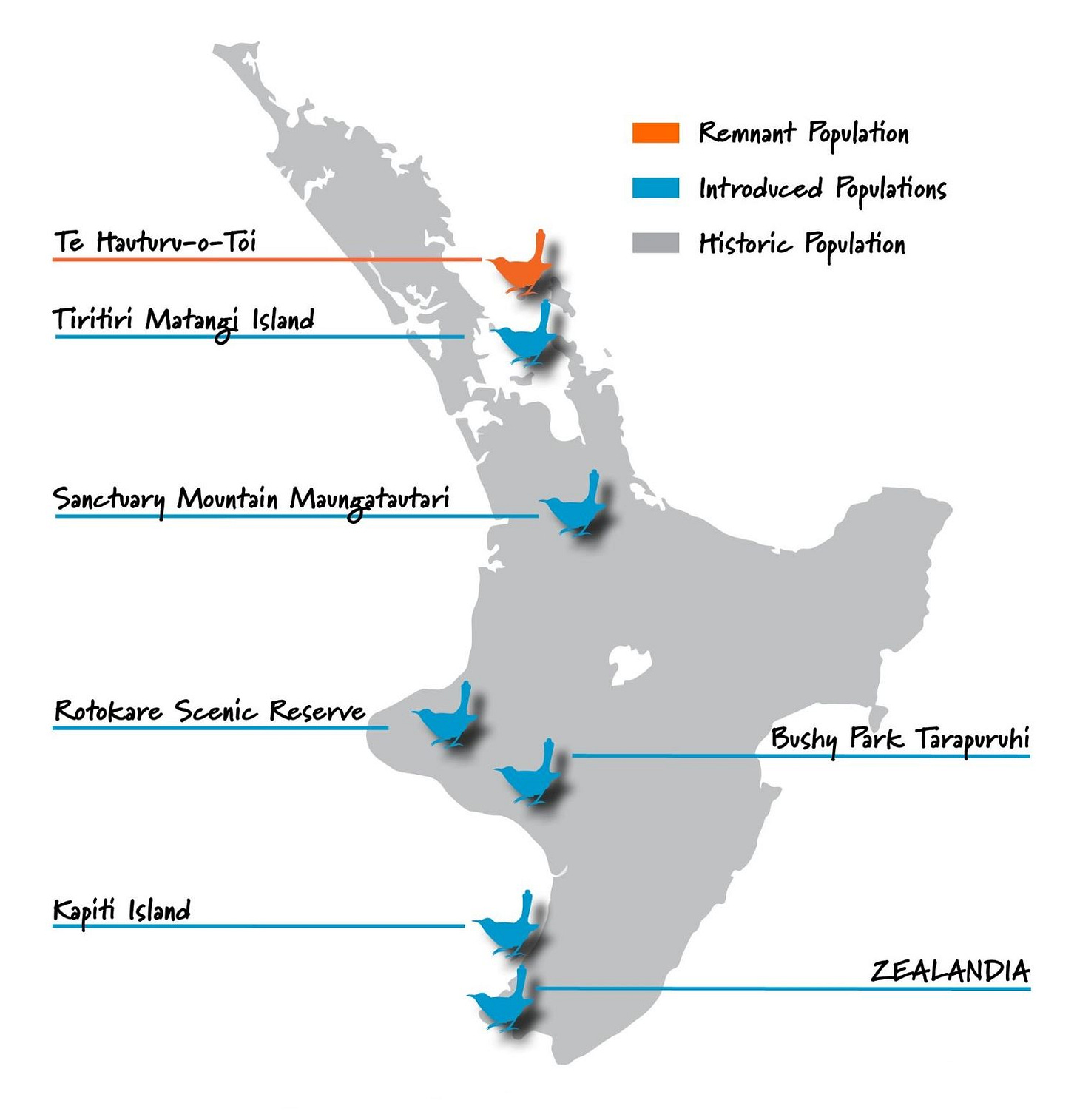Kia ora e hoa - hello my friend☀
I am back home in sunny Otago and enjoying the floral displays in my garden, including our kōwhai tree which is in full bloom and being feasted upon by some of our native nectar-eating birds: tūī, korimako, and tauhou.
But today we’re going to look at a different nectar eater - and one that you are unlikely to find in your garden (yet). The hihi, or stitchbird (Notiomystis cincta, endemic) can also be called kōtihe, tihi, or tiora. It used to be found across the North Island, as well as offshore islands, but during the 1870s experienced a dramatic decline, probably due to heavy predation or introduced avian disease.1
Within ten years hihi had become extinct everywhere except Te Hauturu-o-Toi (Little Barrier Island)2. There is an almost comical description of Austrian collector Andreas Reischek attempting to procure specimens (in part for New Zealand museums, and in part for naturalist Sir Walter Buller). He made five trips, and an additional two attempts where weather prevented him from landing. On some trips he did not even hear a hihi - let alone see one - for weeks, and on one ocassion a pair of birds were “blasted to smithereens”3 in an effort to collect them.4
It was then established on other offshore islands during the 1980s and 90s, including Tiritiri Matangi, and later on the mainland for a total of seven sites. In 2018 the Hihi Conservation Charitable Trust (HCCT) was founded to support hihi recovery.
It is incredibly encouraging to see some groups of hihi surviving on the North Island mainland, especially considering how rare it once was.
And so, if you are living in the North Island there is hope yet that you could see a hihi in your garden - particularly if you live near one of the protected sites. They have similar diet needs to our tūī and korimako, who eat flowers, fruit, and little invertebrates - below you can see a male hihi with a snail in its beak.
The female hihi looks similar to the female korimako. Both around the same size (a bit smaller than a blackbird) with light brown colours, and highly active as they forage. The korimako, however, has scarlet red eyes, white eye-markings, and dark wingtips; the hihi has black eyes, and wings tinged yellow with flashes of white.
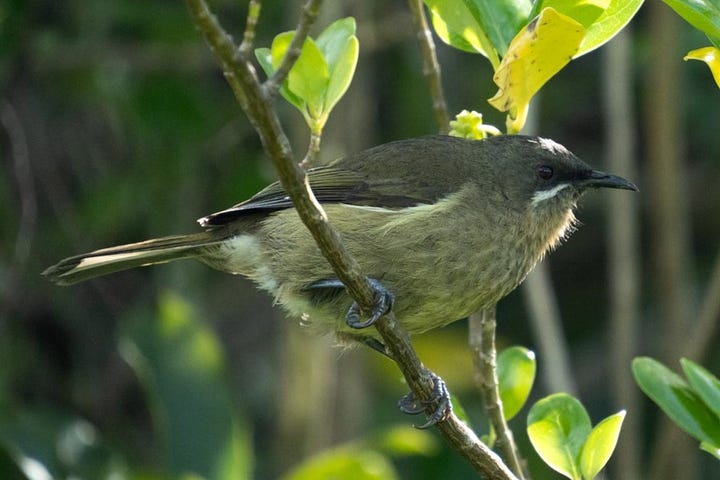
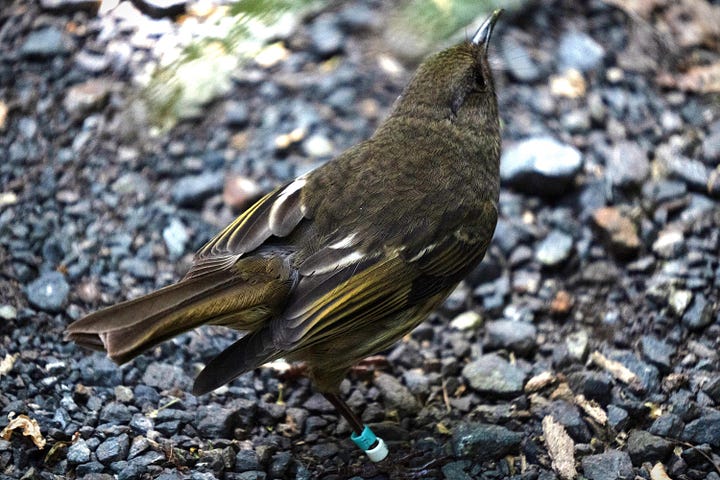
Unlike tūī and korimako, hihi nest in natural tree cavities (or nesting boxes if provided)5 so predator control is essential to the survival of hihi. Food sources you can plant for them include haekaro, kānuka and mānuka, toropapa, rātā, and of course kōwhai. These will also help our other native birds and insects so are worth adding to your garden even if you, like me, are far out of the hihi’s range.
Happy planting,
Zenobia x
The Weekly Wildlife newsletter is free, but if you’d like to support my work & receive member-only posts, join with a monthly or annual subscription.
If you would like to support The Dwindle River Garden with a one-off donation, tap the button below.
Angehr, G. (1985). Stitchbird. John McIndoe Ltd.
Jackson, R. (1982). Wildlife New Zealand. David Bateman Ltd.
Angehr, G. (1984). A Bird in the Hand: Andreas Reischek and the Stitchbird. Notornis Vol. 31, Pt. 4.



